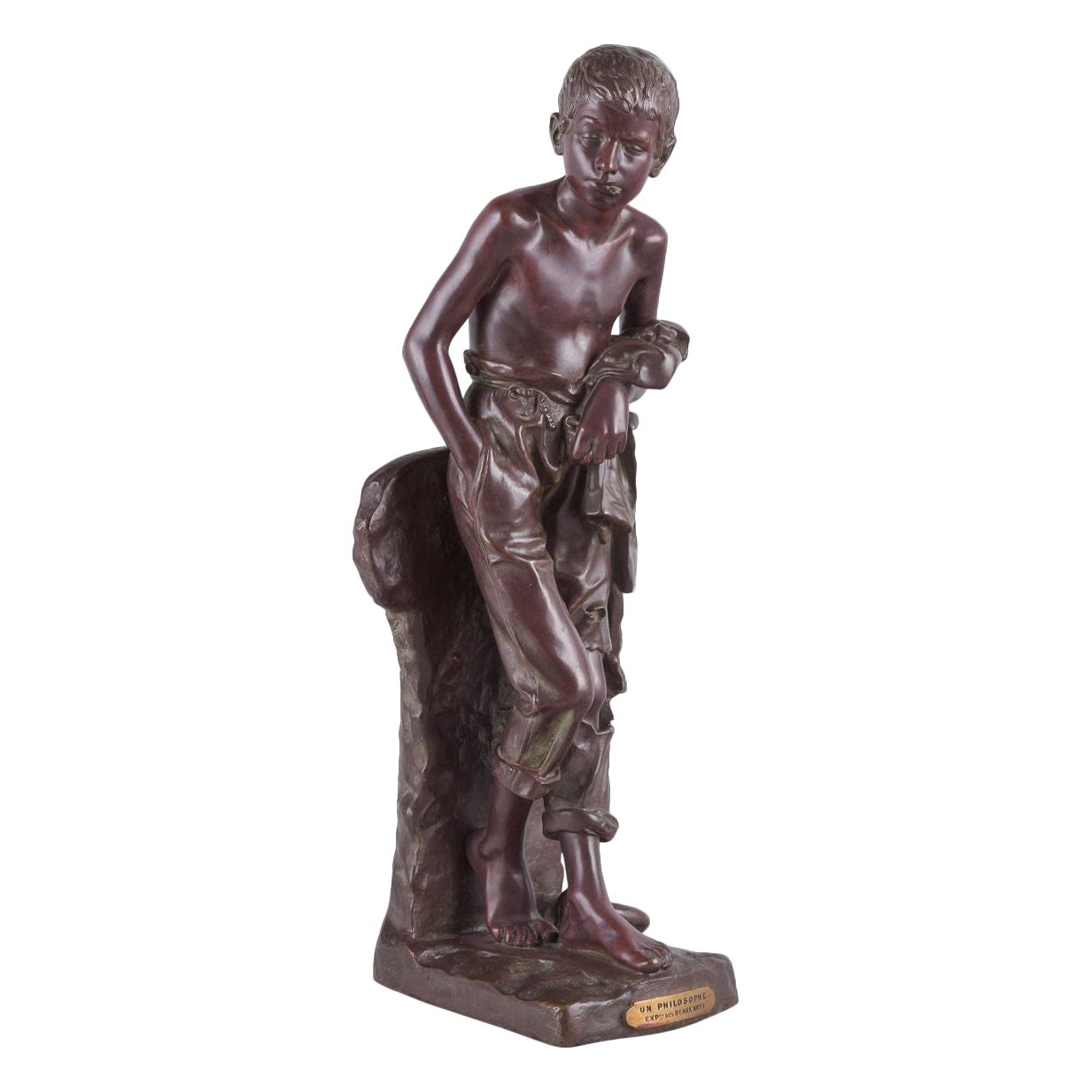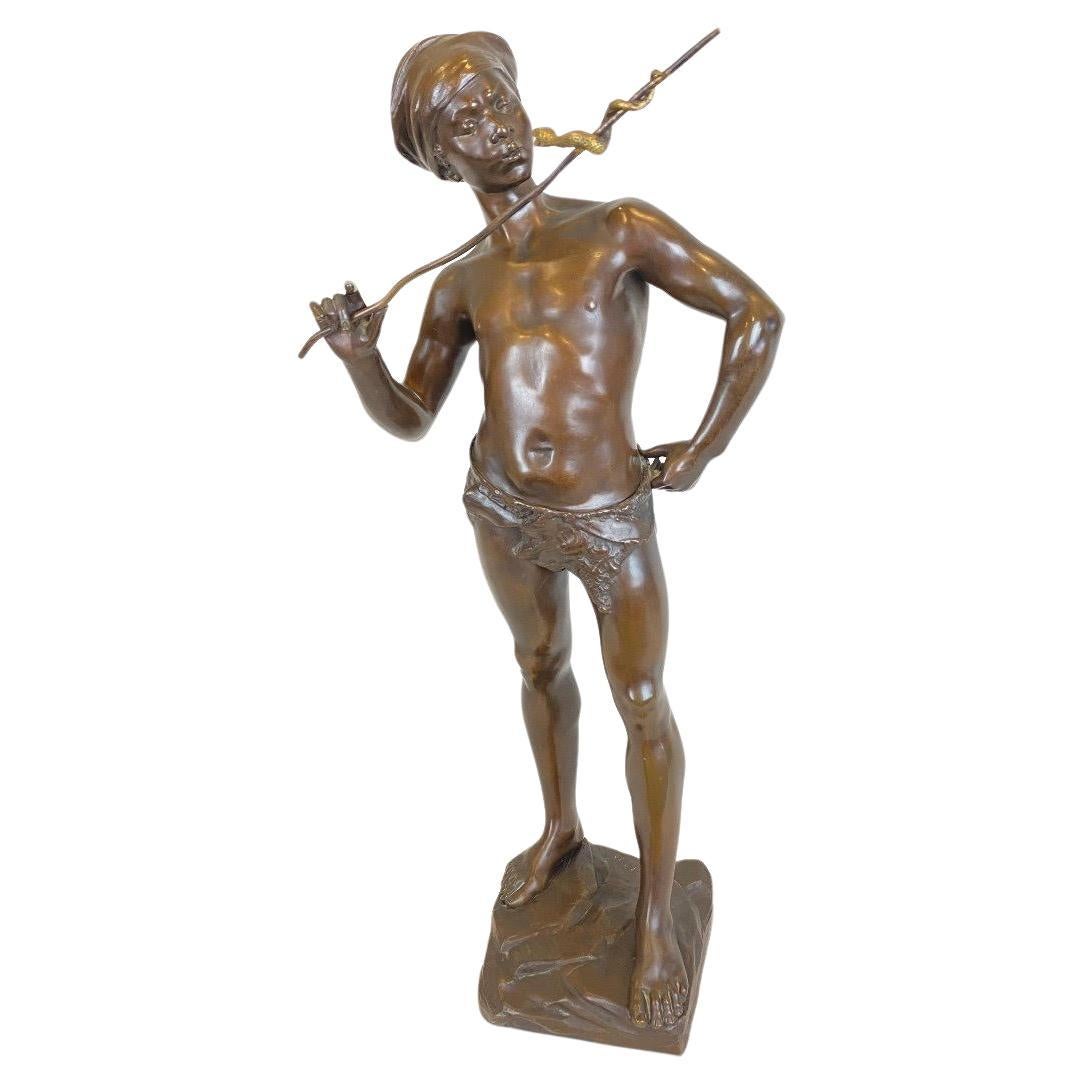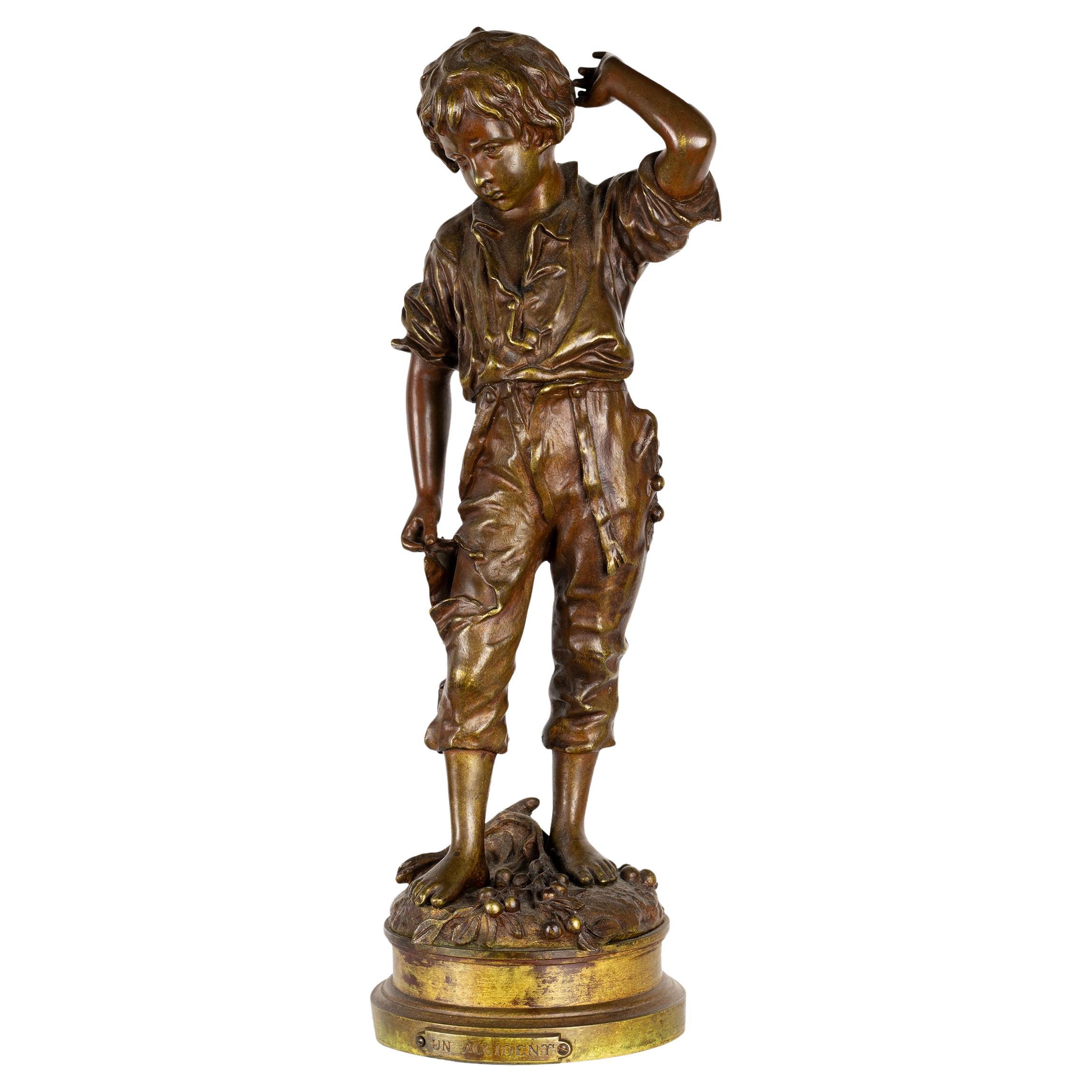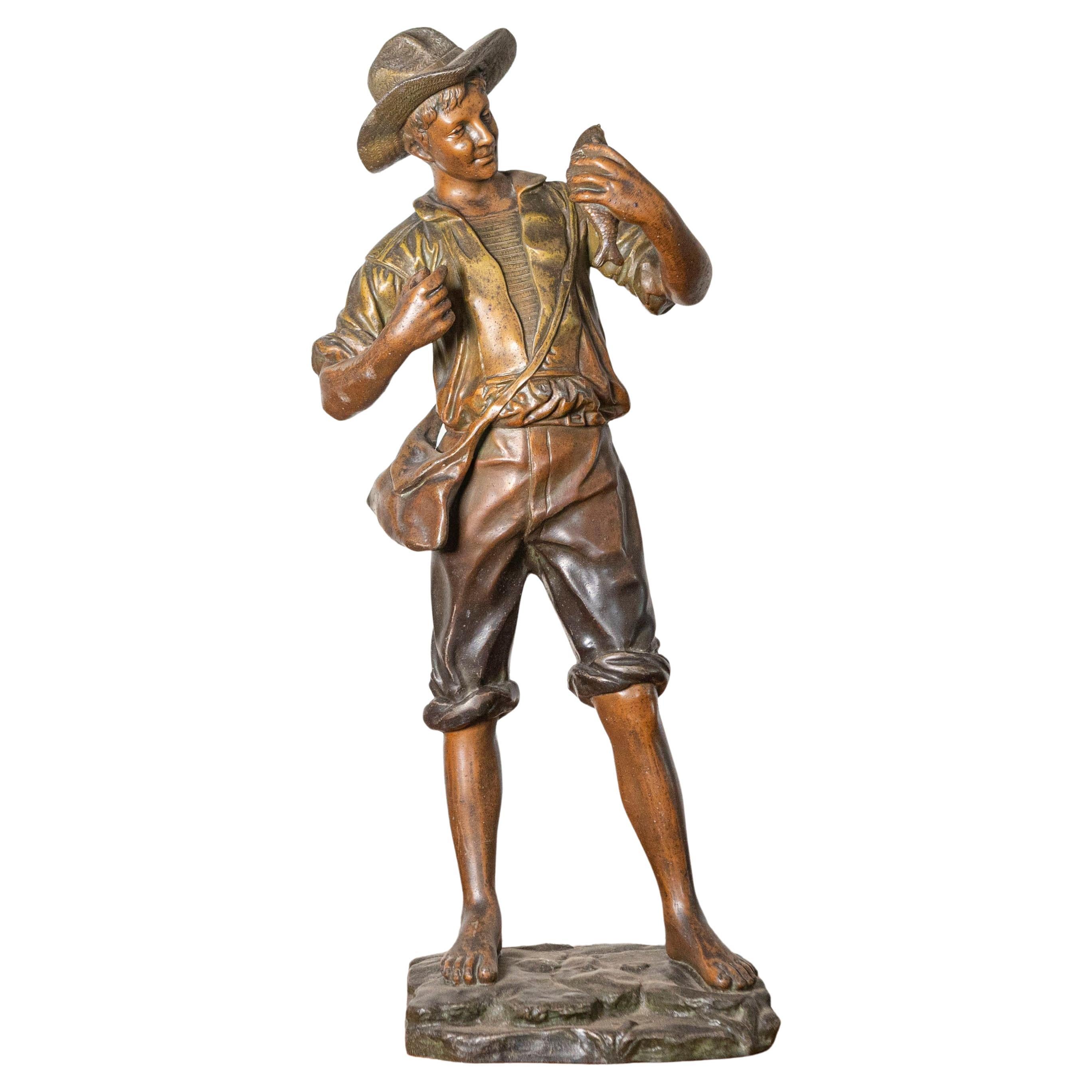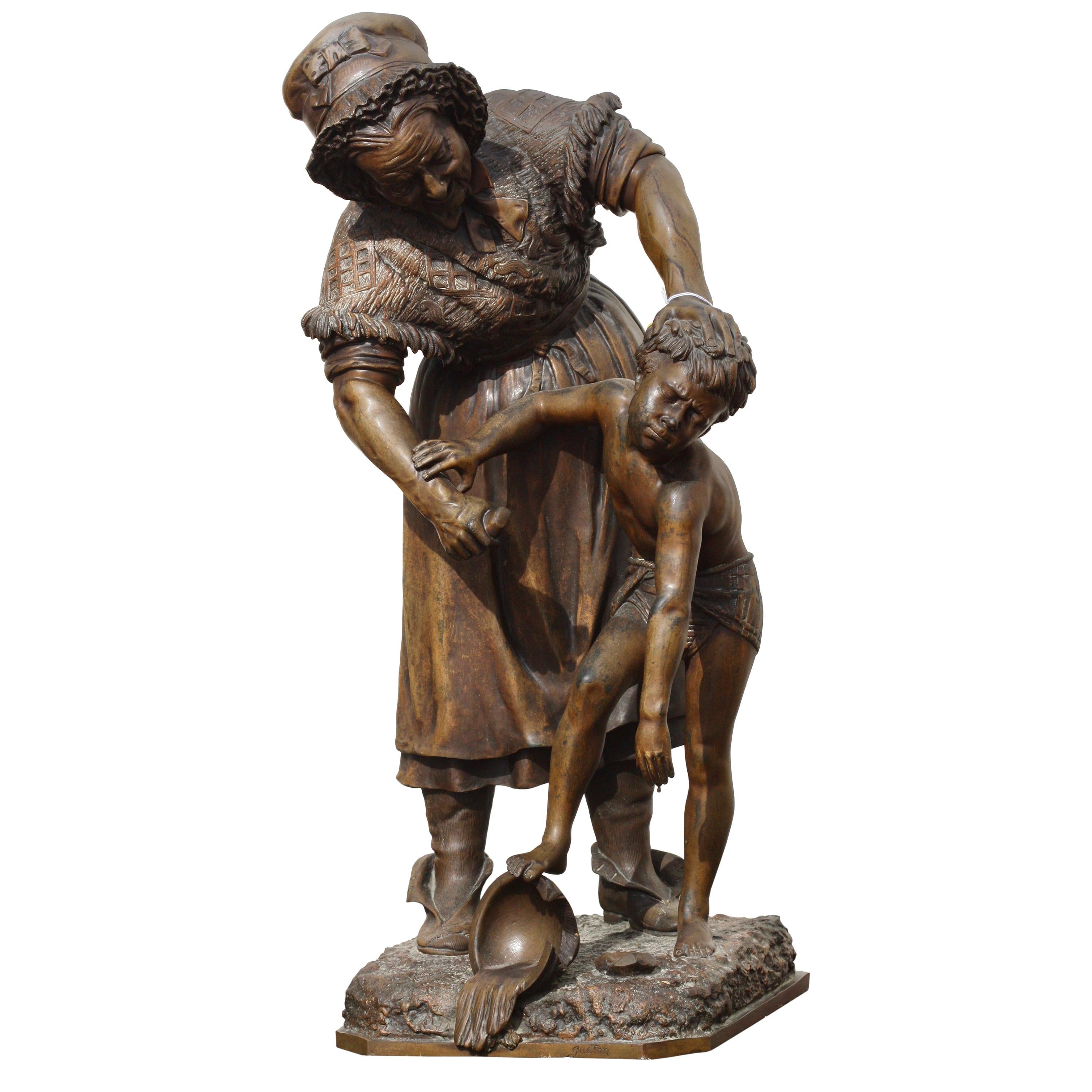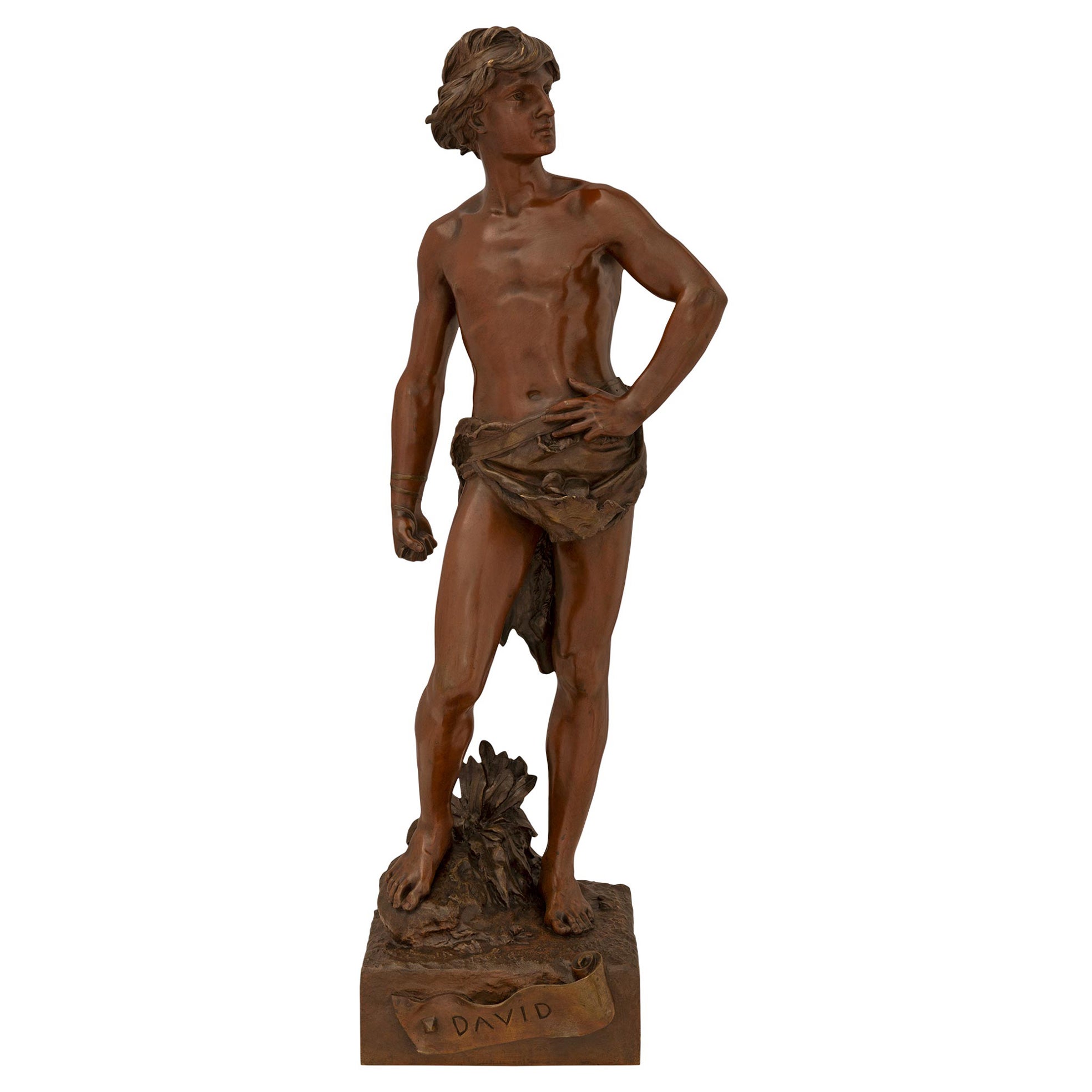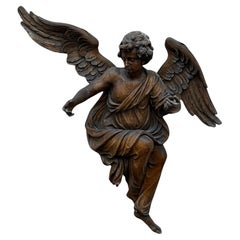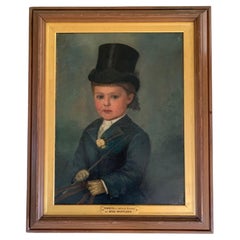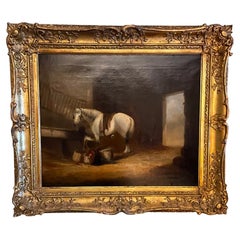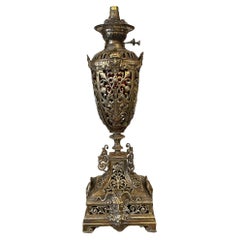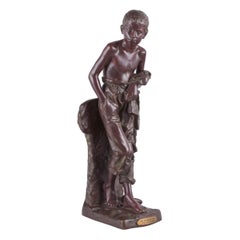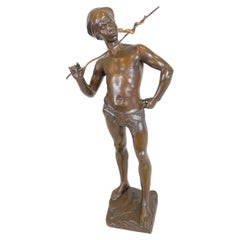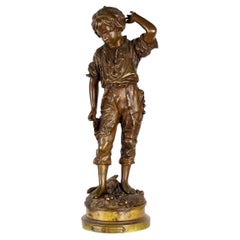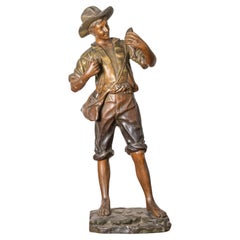Items Similar to Joaquim Angles 19th Century French Bronze entitled ' UN PHILOSOPHE'
Want more images or videos?
Request additional images or videos from the seller
1 of 10
Joaquim Angles 19th Century French Bronze entitled ' UN PHILOSOPHE'
$1,584.38
£1,150
€1,342.98
CA$2,193.68
A$2,394.98
CHF 1,255.59
MX$29,087.93
NOK 15,680.26
SEK 14,806.35
DKK 10,023.89
About the Item
A Fabulous Bronze by Joaquim Angles Cane a 19th Century French Bronze entitled ' UN PHILOSOPHE' (The Philosopher) exhibited at the Beaux Arts, Paris. Signed and comes with the Paris Stamp saying ' bronze Guaranteed for Title' in French.
Joaquín Anglés Cañé (Spanish/French)(Born, 19th August 1859 - Died in Paris 10 May 1911) was a French sculptor. After having learned drawing, he dedicated himself to sculpture at the age of twenty-two, without having studied at an academy or any workshop. He exhibited at many times in Zaragora. Joaquin Anglés also exhibited at the Salon des artistes français from 1890, obtaining an honorable mention there in 1899. He designed statuettes and works of art in an Art Noveau style .was based in Toulouse, France and exhibited two pieces at the Salon in 1890. He won awards at the 1888 Exhibition of the Graciense Economic Society and the London Exhibition. Anglés created busts of the civil governor of Barcelona and Rafael Calvo for the Spanish Theater.
About the Seller
No Reviews Yet
Vetted Professional Seller
Every seller passes strict standards for authenticity and reliability
1stDibs seller since 2022
9 sales on 1stDibs
- ShippingRetrieving quote...Shipping from: Marlborough, United Kingdom
- Return Policy
Authenticity Guarantee
In the unlikely event there’s an issue with an item’s authenticity, contact us within 1 year for a full refund. DetailsMoney-Back Guarantee
If your item is not as described, is damaged in transit, or does not arrive, contact us within 7 days for a full refund. Details24-Hour Cancellation
You have a 24-hour grace period in which to reconsider your purchase, with no questions asked.Vetted Professional Sellers
Our world-class sellers must adhere to strict standards for service and quality, maintaining the integrity of our listings.Price-Match Guarantee
If you find that a seller listed the same item for a lower price elsewhere, we’ll match it.Trusted Global Delivery
Our best-in-class carrier network provides specialized shipping options worldwide, including custom delivery.More From This Seller
View AllA Very Large Late 17th Century Flemish Oak Figure of Winged Angel
Located in Pewsey, GB
A Highly Impressive and Decorative Very Large Flemish Oak Figure of a Winged Angel, late 17th Century, previously part of a church interior. The piece has been beautifully carved wit...
Category
Antique 1690s Belgian Baroque Wall-mounted Sculptures
Materials
Oak
Ethel Mortlock, 'Town', Marie Adelaide Brassey 'Marchioness of Willingdon
Located in Pewsey, GB
Miss Ethel Mortlock an oil on canvas called 'Town' of Marie Adelaide Brassey (aged 3) who became Marchioness of Willingdon (see below) and is buried in the Nave at Westminster Abbey, signed and dated 1878. Picture 60 x 45 cm
Ethel Mortlock (1865-1928) an extraordinary woman and sought after portrait painter, she painted this aged 16!. Born in Cambridge and lived in London. She exhibited at The Royal Academy between years 1878-1893 no less than 29 paintings also at the Grosvenor Galleries. Many of Paintings in museums (See History below and her sitters).
Marie Adelaide Brassey - Marie Adelaide Freeman-Thomas, Marchioness of Willingdon, GBE, CI DStJ (née Brassey; 24 March 1875 – 30 January 1960) was a daughter of Thomas Brassey, 1st Earl Brassey. On 20 July 1892, she married Freeman Thomas , 1st Marquess of Willingdon (12 September 1866 – 12 August 1941), the future Governor General of Canada and Viceroy of India. She became : Invested as an Imperial Order of the Crown of India (C.I.) in 1917, Decorated with the Kaisar-i-Hind Gold Medal , Invested as a Dame of Justice, Venerable Order of St John (D.J.St. J.),Decorated with the Order of Mercy. Invested as a Dame Commander of the Order of the British Empire (DBE) in December 1917. Invested as a Dame Grand Cross of the Order of the British Empire (GBE) in the 1924 Birthday Honours. Marie Canyon on the Cowichan River, Vancouver Island is named for her, commemorating a 1930 canoe trip from Cowichan Lake down that river to the city of Duncan, British Columbia. The Lady Willingdon Hospitol in Lahore, Pakistan is named after her .The Lady Willingdon Hospital in Manali, Himachal Pradesh, India, is named after her.
About Ethel Mortlock : Her clientèle of sitters included members of the aristocracy and European nobility and included, by her account, the Shah of Persia (1900) and the ‘Chinese Ambassador’, Li Hung Chang (who was actually the Chinese Viceroy), à propos which sitting the Sketch published an illustrated interview with Ethel in August 1896. Ethel was thought pretty grand by the American papers who reported that Chang had to go to her studio for sittings in 1896 rather than she wait upon him. He brought her a roll of silk and a white jade palette as presents. Li Hung Chang was a pretty big cheese; his wife had two thousand servants waiting on her. The Chatham, NY, Courier reported that Ethel had painted every Ambassador who had come to London. These last clients, allegedly by failing to pay the £1000 charged for their portraits, landed Ethel in trouble. They were, of course, conveniently unavailable to the bankruptcy commissioners so this sob-story could not be checked. Strapped for cash she was caught out when the executors of a racehorse owner called Edward Overall Bleakley found, in his effects, IOUs for hundreds of pounds (Bleakley had bequeathed his own portrait by Ethel to Manchester Infirmary [Daily News, 1.8.98]). Ethel went to court, claiming that these were offset by painting commissions, but the court found against her and she was told to pay up. Now saddled with legal costs, she was caught again when Captain Noel Hoare, her man of business, died and it was found that he had mortgaged to Hoare’s Bank, without her knowledge (she said), three properties in Sloane Street that she had been building. She tried to buy back one of these but lost a £500 deposit when she could not complete, making a bad situation rather worse. Bleakley’s executors now broke her and her examination in bankruptcy in 1901 can be read in the PRO as above. Her troubles were attributed to extravagance and betting - the Bleakley IOUs were assumed to be in fact gambling debts and the creditors now included all sorts of tradesmen and the Hotel Cecil where Ethel was then living, presumably in some style. She did not help herself by claiming an income of £250 p.a. when individual commissions were on her own account at the £1000 mark as above, meaning that the Chinese and Persian portraits alone would have occupied her last eight years and she would have obtained these prestigious commissions at the age of 18 (she gave her age as 26). Faced by the raised eyebrows of her superiors in mental arithmetic Ethel then upped her declared usual income to a still rather modest £800. She claimed to keep no sort of cash book, accounts, or any memoranda. Proceedings closed with Ethel declared bankrupt and a number of people out of pocket; the settlement was at 7/6 in the pound. Ethel went back to her easel. Some financial aspects seem never to have been sorted out; funds in Chancery relating to her, Hoare and Bleakley were still being recorded in the London Gazette every few years at least up to 1938; maybe the born in Cambridge; she appears never to have married. The 1881 census had not heard of her - she may have been in the United States at that time. However, standard works about Victorian painters, such as the Antique Collectors’ Club Dictionary of British Artists (Johnson %26 Greutzner, 1976) and their Dictionary of Victorian Painters (C Wood, 2nd edition, 1978) tell us that she was a pupil of Sir William Orchardson (who came to London in 1863) and that by 1904 she had exhibited 29 works at the Royal Academy. I have listed these, usually prestigious, sitters, who included Don Carlos...
Category
Antique 1870s British Victorian Paintings
Materials
Paint
$6,557 Sale Price
31% Off
Attr. William Shayer Snr.- Oil, Stable Interior
By WILLIAM SHAYER SENIOR (1787-1879)
Located in Pewsey, GB
Attributed to William Shayer Snr. (1787 – 1879) A Stable interior with a horse and donkey by a briar, baskets and panniers on the floor beside them. Oil on Canvas. This painting was part of Dauntsey Estate, Wiltshire has never been at auction.
51 x 61 cms image only.
William Shayer was an English landscape painter and figure painter who became prominent during the Victorian era. William Shayer was a self-taught artist, who began by painting decorations on rush-bottom chairs. He moved on to painting carriages in the town of Guildford, after which he started doing heraldic painting...
Category
Antique 1860s British Victorian Paintings
Materials
Papercord, Paint
Ornate Brass and Ormolu Oil Lamp
Located in Pewsey, GB
An Ornate Brass and Ormulu Oil Lamp with original reservoir. It has central masks on the square base of the deity Cernounnos who represented prosperity. The upper vase shaped part of...
Category
Antique 1880s French Victorian Table Lamps
Materials
Ormolu
Yuri Gusev 'Russian, Young Standing Male Nude, Signed and Dated '55
Located in Pewsey, GB
Yuri Gusev (Russian, 1928-2012) Young standing male nude signed and dated '55 l.r., pencil
Measures: 61 × 45cm.
Yuri Gusev was born in Moscow in 1928. Studied at Moscow Intermedi...
Category
Mid-20th Century European Mid-Century Modern Drawings
Materials
Paper
Pair of Unusual & Attractive Brass Tall Painted Engraved Lamps
Located in Pewsey, GB
Unusual and attractive brass lamps painted black that have been engraved revealing gold coloured brass detail of leaves and flowers with various symbols. Rewired and Pat Tested
Category
Early 20th Century French Art Nouveau Table Lamps
Materials
Brass
You May Also Like
Joaquim Anglés Cané, Spanish sculptor. 'Un Philosophe'. Large bronze sculpture
Located in København, Copenhagen
Pre-owned goods are exempt from import duties for U.S. customers.
Therefore, no import tariffs will be applicable to your purchase.
Joaquim Anglés Cané (1859-1911), a Spanish scul...
Category
Antique Late 19th Century Spanish Figurative Sculptures
Materials
Bronze
$1,440 Sale Price
20% Off
Sculpture in Patinated Bronze by Adolphe Jean Lavergne, 19th Century.
Located in Saint-Ouen, FR
Sculpture in patinated bronze by Adolphe Jean Lavergne, 19th century.
Sculpture by Adolphe Jean Lavergne in patinated bronze, orientalist bronze, 19th century, Napoleon III period.
...
Category
Antique 19th Century French Napoleon III Figurative Sculptures
Materials
Bronze
French Bronze, Boy Sculpture, Charles Anfrie, 19th Century
By Vrai Bronze B.D., Charles Anfrie
Located in Lisbon, PT
This 19th-century bronze sculpture titled "Un Accident" captures a moment of innocent confusion through the detailed depiction of a barefoot boy in rustic clothing, scratching his he...
Category
Antique 19th Century French Napoleon III Figurative Sculptures
Materials
Metal, Bronze
$5,711 Sale Price
20% Off
19th Century French Bronze Sculpture
Located in Atlanta, GA
This exquisite 19th-century French bronze sculpture captures the essence of rural life through the figure of a young peasant boy. The boy is depicted with a charming, rustic appeal,...
Category
Antique 19th Century Italian Figurative Sculptures
Materials
Metal, Bronze
Antonin Guéton a Rare and Fine Patinated Bronze Figural Group
Located in West Palm Beach, FL
Antonin Guéton (1886-1941)
A rare and fine patinated bronze figural group of a woman washing a boy's mouth out with soap.
Inscribed Gue'ton.
Height 30 in. (76.2 cm.).
Category
20th Century Figurative Sculptures
Materials
Bronze
French 19th Century Patinated Bronze Statue Of A Young David Signed A Gaudez
Located in West Palm Beach, FL
A handsome French 19th century Patinated bronze statue of a young David signed A Gaudez. The statue is raised on a square base displaying a front scroll with ...
Category
Antique 19th Century French Figurative Sculptures
Materials
Bronze
More Ways To Browse
Antique Angles
Antique Governor
Art Noveau
Capodimonte Porcelain Figurine
Chinese Murano
Deco Bronze Lamp Sculpture
F Moreau
Figural Studio Pottery
Flemish Sculpture
Girl With Umbrella
Gladenbeck Bronze
Green Apple Sculpture
Guillemin Bronze
Gymnast Sculpture
Italian Art Lenci
Jean Jules Salmson
Jere Flower
Leonard Bronzes
